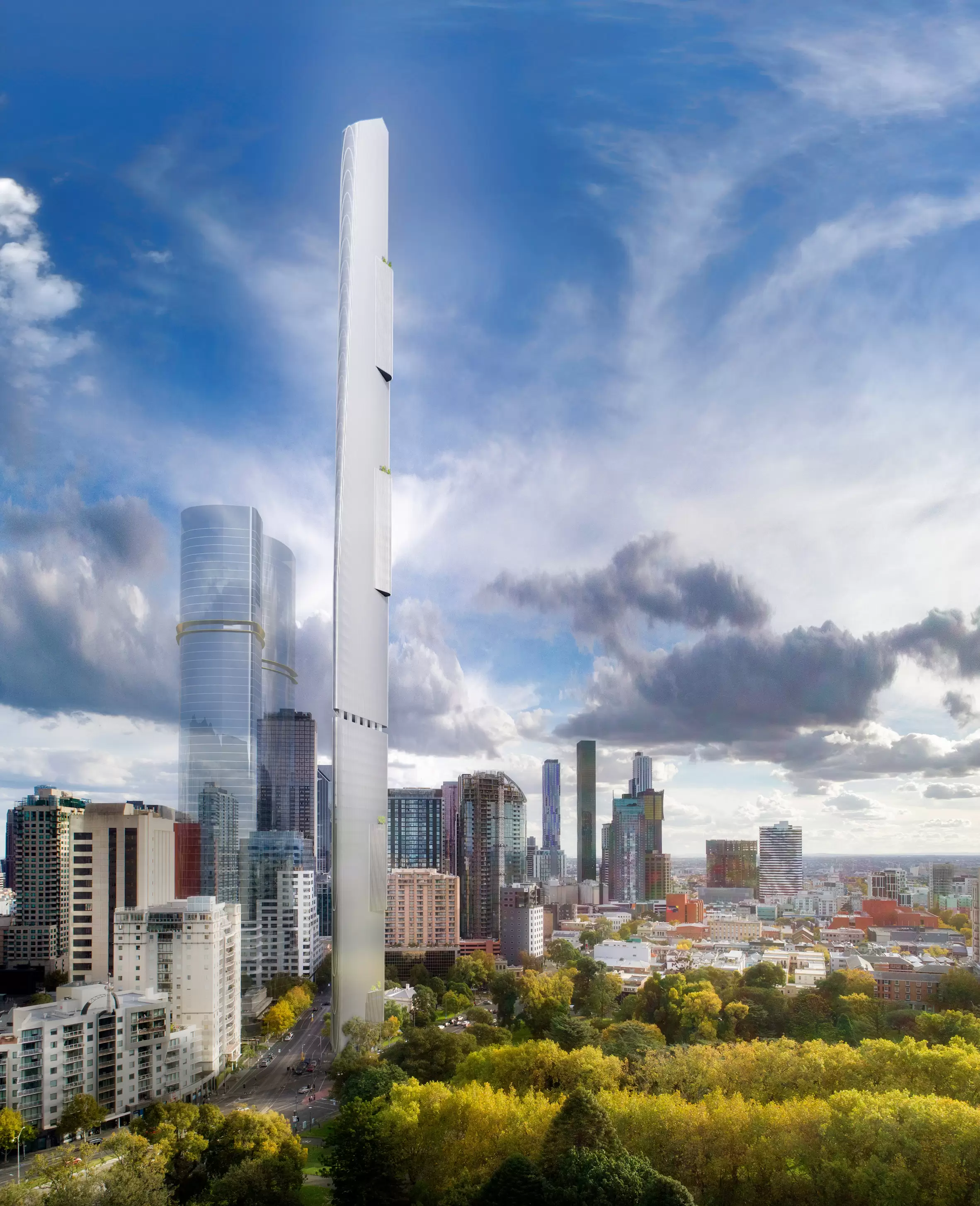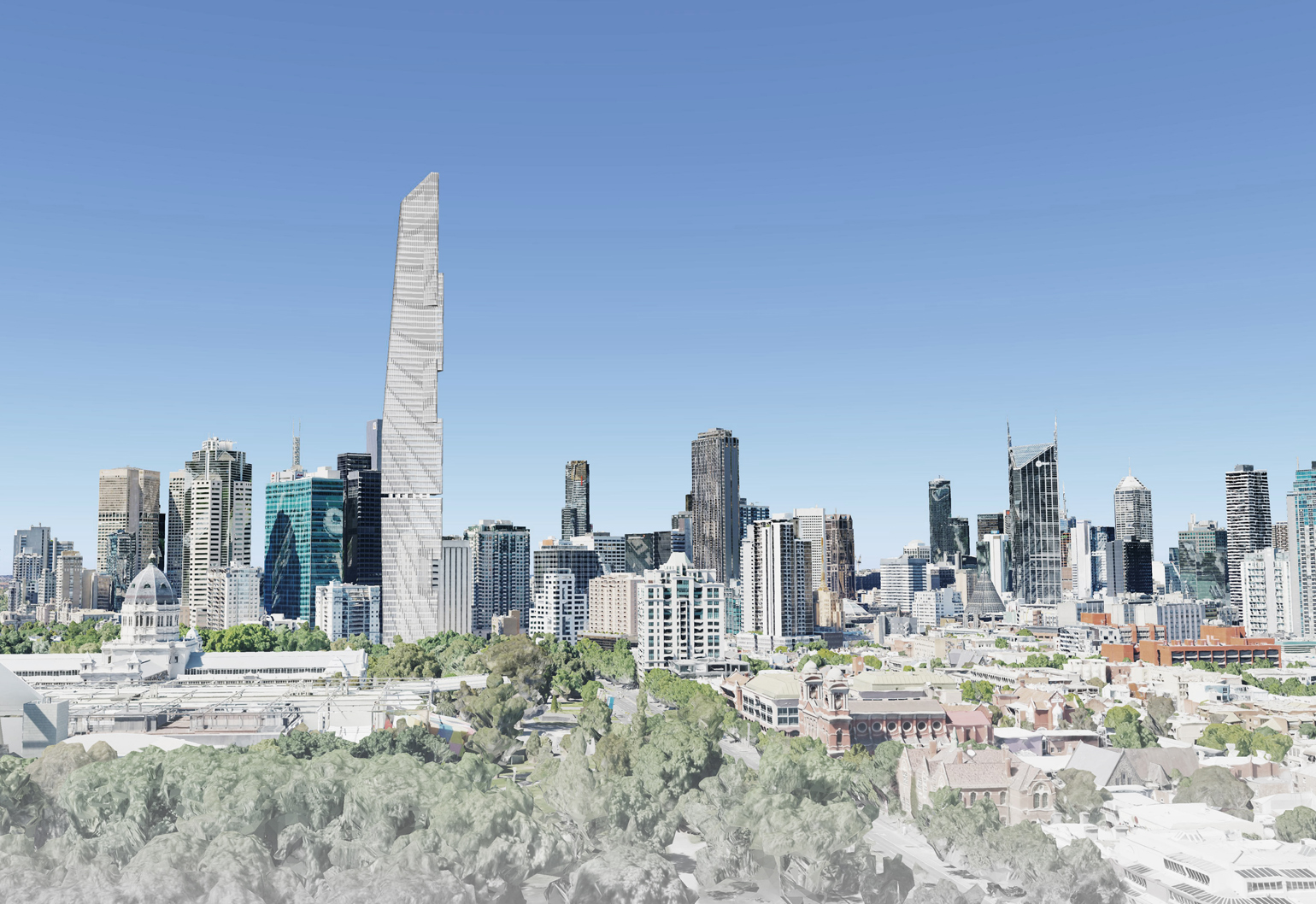If approved, not only would the Magic tower be the tallest building in Australia, but it would pip New Zealand’s Sky Tower to become the tallest in the southern hemisphere.
Standing at 330 metres, the proposed Magic tower would eke past Australia’s current tallest building, the Gold Coast’s Q1 (322.5 metres) and Melbourne’s tallest building, the Eureka Tower (297.3 metres). It would also narrowly surpass the current title holder for tallest in the southern hemisphere, New Zealand’s Sky Tower (328 metres).
However, the Magic tower would be notable for more than just its height – it all sits on a triangular piece of land roughly the size of half a tennis court.
Crowdsourcing ideas
The Royal Society of Victoria (RSV), which owns the proposed building site at the corner of La Trobe and Victoria streets, solicited proposals for what to do with the land after the Bureau of Meteorology moved a weather observation station from the block three years ago.
According to RSV Chief Executive Mike Flattley, they received more than 30 applications from design companies, architecture firms and the general public. Some of the more “interesting ideas”, according to Flattley, included a research centre “[where] we could look at the history of science in Victoria” as well as a science-themed sculpture.
The winning entry, though, came from DeciBel Architecture, which proposed a tower of high-end apartments, each with 250 square metres of floor space. The firm’s construction partner on this project, Grocon, was also responsible for the Eureka Tower.
Wind rules
The triangular plot of land comes with its own unique challenges. Due to its shape, the slenderness ratio would be “off the charts”, said architect and DeciBel founder Dylan Brady.
“The current slenderest is in New York City, at around 22/23:1. If we were a rectangle we would sit at 18:1, but as we are a triangle with an effective width of 12.4 metres, our slenderness ratio pushes into around 26.6:1,” he said.

To fit the narrow plot but keep the height, multiple rotations were added to the tower’s design.
“Tall buildings need their centre of rotation to be as close to the centre of mass as possible – our triangular shape has led to some very interesting tuning and innovation,” Brady said.
And as with any tall, skinny building, wind is a major factor.
“We have a series of open floors through the tower to allow for wind perforation and confusion. The western end of the tower is stepped to detach laminar flows, and the eastern end is tapered, reducing load along the edge,” Brady said.
The core and perimeter of the building would be made from concrete, and the top of the building would be capped with a mass damper to reduce sway.
Funds for science
According to the proposal, profits from the apartment sales would be injected back into the RSV to help promote science initiatives within the state.
Funds will be used to upgrade the RSV heritage-listed headquarters and a caretaker’s cottage that sit on a neighbouring site, develop a new science engagement centre, and create an endowment fund to support the RSV’s efforts to promote science and technology clubs across the state.

The developers have announced several sustainability initiatives for the building as well. The northern and western sides of the building will be fitted with solar panels, which will provide power to both the tower and the RSV facilities nearby. Another proposed feature is rainwater collection points for non-potable use.
The plans were made public in late May, and the RSV will now begin rounds of consultation with government and community stakeholders. There are a few layers of approval to this one: it will need approval from Heritage Victoria; the State Government and the Federal Government; as well as approval from an aviation operations standpoint.
If approved it could be built as early as 2022.



